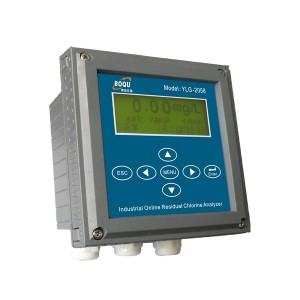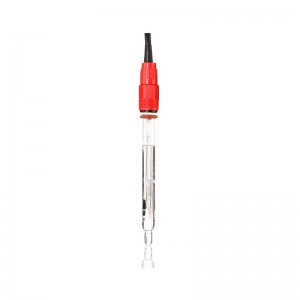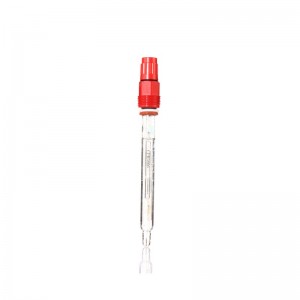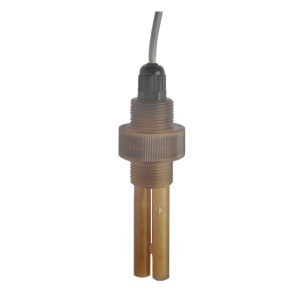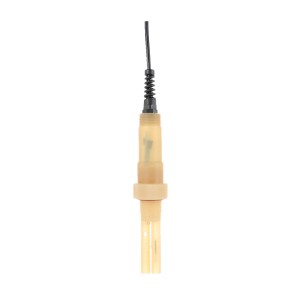Fermentation processes play a crucial role in various industries, including food and beverage production, pharmaceuticals, and biotechnology. These processes involve the conversion of raw materials into valuable products through the action of microorganisms. One critical parameter in fermentation is the concentration of dissolved oxygen (DO) in the liquid medium. To monitor and control this vital factor, industries rely on fermentation DO sensor. These sensors provide real-time data on oxygen levels, enabling efficient and consistent fermentation processes.
Membrane Degradation: The Aging Challenge — Fermentation DO Sensor
Another challenge associated with Fermentation DO sensors is the degradation of their membranes over time. The membrane is a critical component of the sensor that comes into direct contact with the liquid being measured. Over time, exposure to the fermentation environment, including temperature fluctuations and chemical interactions, can cause the membrane to deteriorate.
To mitigate membrane degradation, sensor manufacturers design their products with durable materials and offer options for easily replaceable membranes. Regular inspection and maintenance can help prolong the lifespan of these sensors and maintain their accuracy over the long term.
Calibration Woes: The Time-Consuming Task — Fermentation DO Sensor
Calibrating Fermentation DO sensors is a necessary but time-consuming task. Proper calibration ensures the accuracy of measurements and helps in achieving consistent and reliable results. However, the calibration process can be labor-intensive, requiring careful adjustment and verification.
To address this challenge, sensor manufacturers provide detailed calibration procedures and user-friendly interfaces to simplify the calibration process. Automated calibration systems are also available, which can save time and reduce the risk of human error during calibration.
The Purpose of Fermentation DO Sensors: Monitoring Oxygen Levels with Precision — Fermentation DO Sensor
The primary purpose of a Fermentation DO sensor is to provide real-time data on the concentration of dissolved oxygen in a liquid medium during fermentation processes. Why is this so important? Well, many microorganisms used in fermentation, such as yeast and bacteria, are highly sensitive to oxygen levels. Too much or too little oxygen can significantly impact their growth and metabolism.
In industries like brewing and biotechnology, where fermentation is a key process, having precise control over oxygen levels is essential. A Fermentation DO sensor allows operators to monitor and adjust oxygen levels as needed, ensuring optimal conditions for the microorganisms involved.
Principle of Operation — Fermentation DO Sensor
Fermentation DO sensors typically operate on the polarographic principle. At the core of these sensors is an electrode that comes into contact with the fermentation broth. This electrode measures the current generated by the oxidation or reduction of oxygen molecules at its surface. The sensor’s operation is as follows:
1. Electrode: The central component of the sensor is the electrode, which is in direct contact with the fermentation medium. It is responsible for detecting changes in the oxygen concentration by measuring the current associated with oxygen-related redox reactions.
2. Electrolyte: An electrolyte, often in the form of a gel or liquid, surrounds the electrode. Its primary role is to facilitate the transfer of oxygen to the electrode’s surface. This enables the electrode to accurately detect changes in the DO concentration.
3. Membrane: To protect the electrode from other substances present in the fermentation medium, a gas-permeable membrane is employed. This membrane selectively allows only oxygen to pass through while preventing the entry of contaminants that could interfere with the sensor’s accuracy.
4. Reference electrode: Many fermentation DO sensors incorporate a reference electrode, commonly made of silver/silver chloride (Ag/AgCl). The reference electrode provides a stable reference point for measurements, ensuring the accuracy and reliability of the sensor’s readings.
Shanghai BOQU Instrument Co., Ltd.: A Trusted Manufacturer — Fermentation DO Sensor
When it comes to selecting reliable fermentation DO sensor, one name stands out: Shanghai BOQU Instrument Co., Ltd. This manufacturer has established a strong reputation for producing high-quality instruments for various industrial applications, including fermentation monitoring.
Shanghai BOQU’s fermentation DO sensors are built with precision and reliability in mind. They adhere to the polarographic principle, ensuring accurate measurements of dissolved oxygen concentrations throughout the fermentation process. Their sensors are equipped with durable electrodes, efficient electrolytes, and selective membranes that contribute to their long-term performance and resistance to harsh fermentation conditions.
Moreover, Shanghai BOQU Instrument Co., Ltd. provides comprehensive support, including calibration services and technical assistance, to ensure that their sensors continue to deliver precise and dependable results.
Maintenance: Ensuring Accuracy and Reliability — Fermentation DO Sensor
The accuracy and reliability of Fermentation DO sensors are vital for the success of any industrial process. Routine maintenance is a non-negotiable aspect of sensor care. Here are some key maintenance tasks:
1. Cleaning: Regular cleaning of the sensor’s membrane is essential to prevent fouling and ensure accurate readings. Contaminants can build up on the membrane’s surface, interfering with oxygen measurement. Cleaning with the appropriate solutions helps maintain sensor performance.
2. Membrane Replacement: Over time, membranes can become worn or damaged. When this happens, it’s crucial to replace them promptly to maintain accuracy. Shanghai BOQU Instrument Co., Ltd. provides high-quality replacement membranes for their Fermentation DO sensors.
3. Electrolyte Solution: The sensor’s electrolyte solution should also be monitored and replenished as needed. Maintaining the proper electrolyte level is essential for sensor functionality.
Control and Automation: Precision at Its Best — Fermentation DO Sensor
One of the standout features of Fermentation DO sensors is their integration into control systems. The data generated by these sensors can be used to regulate various parameters, such as oxygen supply, mixing, and agitation. This integration enhances the precision and efficiency of fermentation processes.
For instance, in a biotech company producing enzymes, the sensor data can be used to control the aeration rate. If the DO level drops below the desired setpoint, the system can increase oxygen supply automatically, ensuring optimal conditions for microorganism growth and enzyme production.
Data Logging and Analysis: The Path to Continuous Improvement — Fermentation DO Sensor
The data collected by Fermentation DO sensors is a treasure trove of information. It provides insights into the fermentation process, allowing industries to improve product consistency and yield. Data logging and analysis play a crucial role in this journey of continuous improvement.
By tracking DO levels over time, companies can identify trends, anomalies, and patterns. This data-driven approach empowers them to make informed decisions about process optimization, leading to higher productivity and reduced production costs.
Conclusion
Fermentation DO sensor is indispensable tools in industries reliant on fermentation processes. These sensors, operating on the polarographic principle, offer accurate and real-time monitoring of dissolved oxygen concentrations. Manufacturers like Shanghai BOQU Instrument Co., Ltd. are trusted sources for high-quality fermentation DO sensors, ensuring the success of fermentation processes and the production of consistent, high-quality products. With their commitment to precision and reliability, Shanghai BOQU Instrument Co., Ltd. continues to play a vital role in the advancement of fermentation technology across various industries.
Post time: Sep-14-2023


